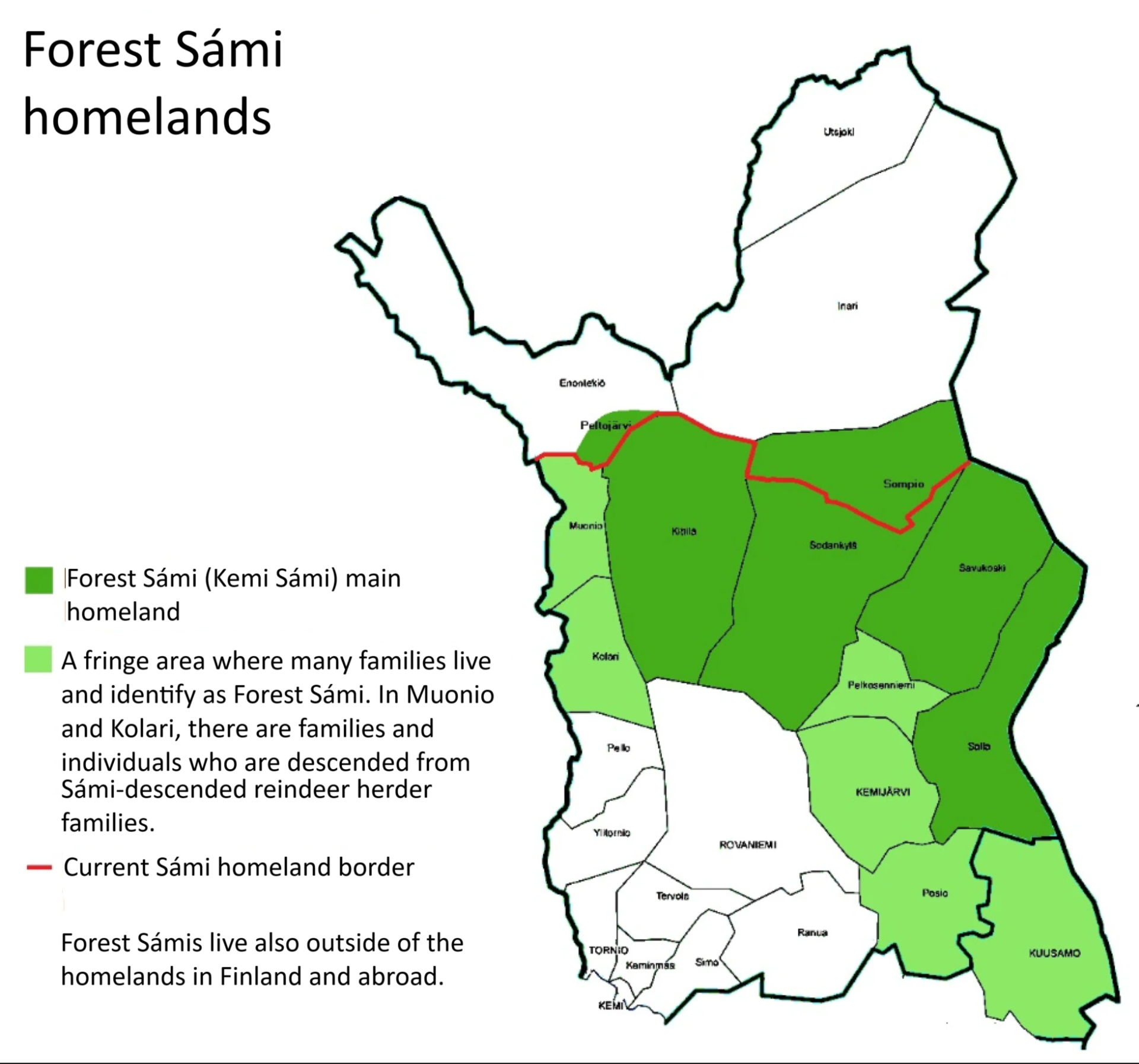Information about Forest Sámis
Vuevde kázze eälá táábben táál ja oovddâs*

Forest Sámi culture a living culture with roots in the former region of Kemi Lapland. Kemi Lapland included nine Sámi-inhabited Siidas, or traditional Sámi villages: Inari, Keminkylä, Kitka, Kittilä, Kuolajärvi, Maanselkä, Peltojärvi, Sodankylä, and Sompio. We are the original Sámi people who have demonstrably lived in the areas of these Siidas since at least the 1500s. We descend from the oldest known Indigenous inhabitants of Lapland. We are part of the Sámi Indigenous people.
The traditional livelihoods of the Forest Sámi have been, and still are to this day, hunting, fishing, berry picking, reindeer herding and subsistence farming. Although many now earn their living through modern forms of employment, the previously mentioned livelihoods still remain a part of everyday life for the Forest Sámi in various ways.
Culture is a much broader concept than spoken and written language — a language which the Forest Sámi lost in the past due to circumstances beyond their control. Among the Forest Sámi, there is a vibrant culture of traditional clothing, accessories, and storytelling. In nearly every Siida area, at least some elements of traditional Sámi clothing have been continuously in use. In many localities, valuable efforts have been — and continue to be — made to preserve traditional clothing and accessory culture.
Although the Kemi Sámi language is now extinct, it has left behind a rich heritage of place names, dialect words, and language samples that still exist today. Work is already underway to revive the language.
*Kemi Sámi, translated: the people of the forest live here now and always.

